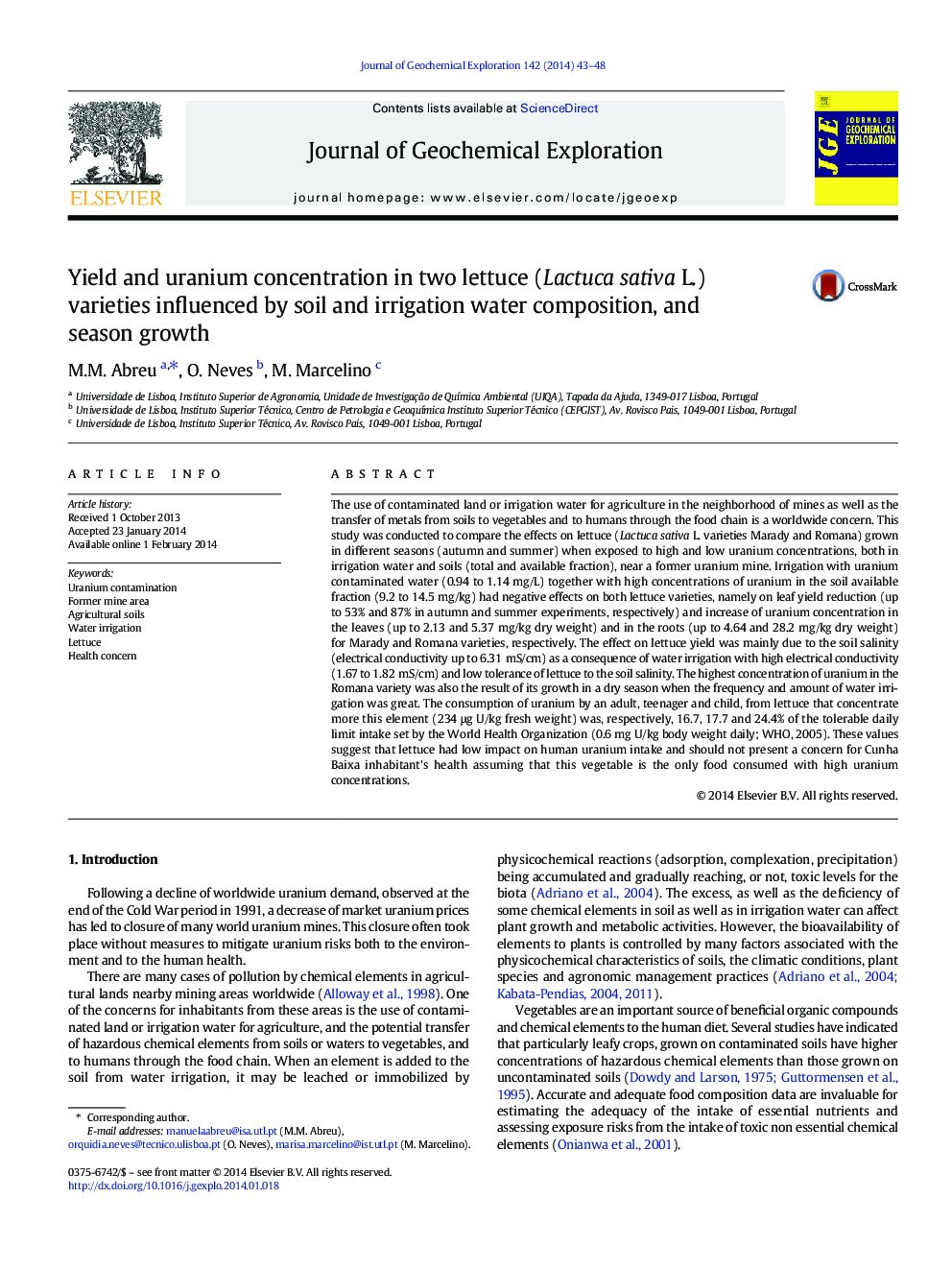| Article ID | Journal | Published Year | Pages | File Type |
|---|---|---|---|---|
| 4457401 | Journal of Geochemical Exploration | 2014 | 6 Pages |
•Field experiments with lettuce in agricultural soils near a former uranium mine.•Uranium contaminated water had negative effects on lettuce as yield reduction.•High U concentrations in soil available fraction increase [U] in lettuce leaves.•Highest U accumulation in lettuce leaves and roots in summer season.•Lettuce had low contribution to human U intake and does not represent health concern.
The use of contaminated land or irrigation water for agriculture in the neighborhood of mines as well as the transfer of metals from soils to vegetables and to humans through the food chain is a worldwide concern. This study was conducted to compare the effects on lettuce (Lactuca sativa L. varieties Marady and Romana) grown in different seasons (autumn and summer) when exposed to high and low uranium concentrations, both in irrigation water and soils (total and available fraction), near a former uranium mine. Irrigation with uranium contaminated water (0.94 to 1.14 mg/L) together with high concentrations of uranium in the soil available fraction (9.2 to 14.5 mg/kg) had negative effects on both lettuce varieties, namely on leaf yield reduction (up to 53% and 87% in autumn and summer experiments, respectively) and increase of uranium concentration in the leaves (up to 2.13 and 5.37 mg/kg dry weight) and in the roots (up to 4.64 and 28.2 mg/kg dry weight) for Marady and Romana varieties, respectively. The effect on lettuce yield was mainly due to the soil salinity (electrical conductivity up to 6.31 mS/cm) as a consequence of water irrigation with high electrical conductivity (1.67 to 1.82 mS/cm) and low tolerance of lettuce to the soil salinity. The highest concentration of uranium in the Romana variety was also the result of its growth in a dry season when the frequency and amount of water irrigation was great. The consumption of uranium by an adult, teenager and child, from lettuce that concentrate more this element (234 μg U/kg fresh weight) was, respectively, 16.7, 17.7 and 24.4% of the tolerable daily limit intake set by the World Health Organization (0.6 mg U/kg body weight daily; WHO, 2005). These values suggest that lettuce had low impact on human uranium intake and should not present a concern for Cunha Baixa inhabitant's health assuming that this vegetable is the only food consumed with high uranium concentrations.
